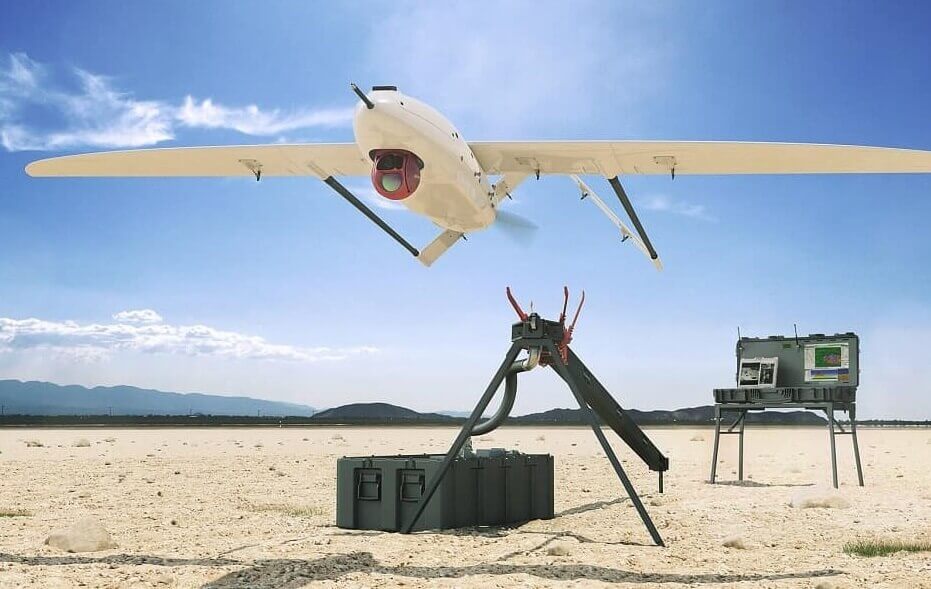Edge Autonomy, headquartered in San Luis Obispo, California, has announced a deal to produce and deliver an undisclosed number of long-endurance Penguin drones for the US Army.
The manufacturer produces light drones that can carry a variety of payloads for intelligence, surveillance, and reconnaissance (ISR), as well as targeting.
According to the press release Edge Autonomy, the business has offered UAS solutions (products) to the US Department of Defense and NATO allies for nearly 25 years.
However, it did not reveal the size of the new or existing orders.
The penguin drones are similar in appearance to the well-known Turkish-made Bayraktar TB2.
Penguins are considerably smaller and fill different niches while maintaining an equivalent level of endurance.

Edge Autonomy, formerly UAV Factory, was founded in Latvia in 2009. Early in 2022, the company rebranded following a merger with Jennings Aeronautics.
The company, which has offices in Latvia, California, and Virginia, manufactures several Penguin variants, including an electric-powered Penguin BE and a vertical take-off and landing-capable Penguin B VTOL.
It also offers different drone operations elements such as payloads, launchers, and control stations.
The company’s unmanned technologies are employed by government, commercial, and academic customers in nearly 60 countries.
Penguin B Drone
Penguin B is one of the most successful variants of the penguin drone. Since its introduction in 2009, the Penguin B high-performance, semi-integrated mini-UAV has been sold to system integrators in over 40 countries, as per reports.
The company unveiled a VTOL upgrade kit for the Penguin B in June 2021. The drone gathers real-time intelligence data and transmits it via a digital data link to the portable ground control station (PGCS).
The Penguin B is made to adapt quickly to both industrial and commercial uses.
The 2.2 meters long and 3.3-meter-wide aerial vehicle is crafted to function in adverse weather like rain and snow. It can launch from a runway or a car-top launcher (CTL) and land using a parachute to recover.
It also has an electro-optic camera installed beneath the centerline fuselage section to capture images of the field it surveys.
Penguin B has electro-optic (EO) and infrared (IR) sensors. It can be controlled either manually or autonomously by the PGCS.
Edge Autonomy Factory of Latvia designed and produced the PGCS. A single operator can manage the vehicle and its payloads. “The Penguin B is designed to suit both military and commercial applications flexibly,” said the company.
The PGCS is simple to set up for autopilot operations. It includes a Panasonic 13-inch CF-31 laptop, a 17-inch secondary touch screen payload display, cutting-edge battery power systems, GPS tracking antennas, video receivers, an RC-transmitter mouse, an optional joystick, and other auxiliary gear.
A Honda four-stroke engine with an output power range of 1.3 to 2.5 hp powers the crewless aerial vehicle. The aircraft has a fixed tricycle-style landing gear system with two main gear legs, a dirigible nose gear leg, and oleo-pneumatic shock absorbers.
Penguin B has a top speed of 129 km/h with a maximum service height of 5,000 meters and a take-off distance of 30 meters. According to the company’s website, the aircraft has a maximum flight time of more than 20 hours.
Penguin C Drone
The long-range aircraft system Penguin C is built on the reliable airframe platform of the Penguin B UAS, which has been in use since 2012.
Militaries can employ this unmanned aircraft system for routine checks, surveillance, object tracking, small moving target detection, and intelligence gathering. In March 2019, the Latvian National Armed Forces ordered Penguin C unmanned aircraft systems.
With its autonomous launch and parachute recovery systems, the Penguin C is a runway-independent aircraft that can operate in remote locations with limited infrastructure.
A man-portable pneumatic catapult launcher is available for use in launching the aircraft.
In less than an hour, the drone can be assembled and launched by two crew members.
The Penguin C UAS also has an electro-optical and infrared (EO/IR) sensor payload that allows it to conduct surveillance, object tracking, and intelligence operations.
Epsilon gyro-stabilized day/night gimbals like the 140, 135 HD Day, 140Z, and 175 can be incorporated entirely with the unmanned aircraft system thanks to motorized retraction and anti-vibration damping.
A dual touch-screen display unit of military grade that supports operations in adverse weather is part of Penguin C’s portable ground control system.
The Penguin C UAS is propelled by a 28cc electronic fuel injected (EFI) engine that operates on 98 Octane fuel. The onboard engine cooling system enables operations in temperatures below freezing and extreme heat.
- Contact the author at ashishmichel@gmail.com
- Follow EurAsian Times on Google News